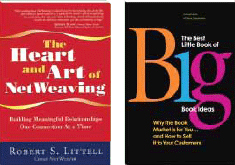Written by Howard Fenton
Senior Technology Consultant
NAPL
This is part two of a blog about print vs. e-books. Part one was prompted by the announcement that Transcontinental is selling their book division. We also discussed a report that e-books of novels aimed at adults outsold hardcover’s as well as reports from Bowker on book sales growth and Pew Study on book reading preference.
Before discussing markets, we have to acknowledge that there are arguments from passionate people who like the look and feel of print and there is an ongoing controversy about reading comprehension. Also some book readers are self proclaimed “purists” and will speak volumes (pun intended) about the feel, the smell, and the look of a printed book. In addition, some will argue that college students have trouble learning from computers or tablets. But the first is a generational arguments that will fade with time and the second is more an issue of poor annotation tools for highlighting, underlining or folding pages.
However, a new study by the Joan Ganz Cooney Center at Sesame Workshop examines the way young children relate to stories they encounter in print versus on an e-reader. Though the sample size was small, they found that children who read e-books recalled significantly fewer details than children who read the print version of the same story.
Then there is the interesting story about tablets and autism. I’m not sure if this should be considered reading comprehension but stories on 60 minutes and in the New York Times have demonstrated the effectiveness of iPads as communication and teaching tools for children with autism. It’s moving to hear teachers, parents and therapists describe the profound difference that tablets have made in helping autistic children develop and learn new skills.
But putting comprehension aside, let’s look at markets. Ironically, children’s books are a good example of a market that is somewhat resistant to digital books. The Pew Study in the last blog mentioned this and there are many articles about why parents prefer to read to their children from printed books.
But it’s the photo book market that has sustained as the a opportunity, according to market research firms. In 2008 InfoTrends projected that the market would grow from $377 million in revenue in 2008 to reach $1.2 billion by 2013. IDC‘s Marketplace Creative Photo Print Solutions 2009 report stated that worldwide creative photo revenue will grow an average of 40% to $12 billion in 2013. In 2010 Lyra said, “The market for photo books has been increasing for several years. Lyra forecasts that the market will continue to rise, reaching 51.9 million in 2010 and 92.3 million in 2014, for a compound annual growth rate (from 2009 to 2014) of 18.9 percent.”
Most recently, in a blog written by Steve Hoffenberg, Director, Consumer Imaging Research, Lyra Research he says, “Photo books have become so successful because of the strong benefits they offer to both consumers and vendors—a rare combination that has enabled the worldwide photo book market to grow unabated right through the latest economic recession.”
There are literally piles of research on the book market—some that is consistent and some that is inconsistent. But there are a few things that are clear:
- the book industry is struggling with the same issues as the commercial printing industry, some applications and markets are shrinking, some are holding their own and some are growing.
- there is a cannibalization of long run offset printed books, to both electronic versions and books needing shorter print runs done on either toner or inkjet digital presses.
- there is a 2% predicted decline in the number per year from 2010-2015 (Interquest)
- there will be a growth in digital printing. Digital pages currently accounts for 4% of all books printed today, which will grow to 15% by 2015 (Interquest).
The opportunities are for shorter run books made with automated workflows and software that will allow books to be sold as short runs or as e-books. But we want to hear from you. What do you think?
- When it comes to books do you prefer paper or pixels?
- Do you think e-books are killing printed books?
- Which markets will survive and what new markets may appear?
—-
Howard Fenton is a Consultant and Business Advisor at NAPL. Howie advises commercial printers and in-plants on benchmarking performance against industry leaders, increasing productivity through workflow management, adding and integrating new digital services, and adding value through customer research. He is a paid contributor to this blog.



I love to see all the prognosticators make predictions for the demise of books. I have seen and heard these people rant since the advant of the PC in the late 70’s. Howie is right in that there are many data points but the road is still very long and end user behvior and results need to be better understood before there are final pronouncments. (see USA Today article on students preference for print over ebooks in higher education on 8/14/2012)
The unvarnished truth is pretty simple.
-Ebooks will continue to grow but the rates will very by segment. (see AAP sales through April for Childrens books and Trade Books).
-Ebook sales are good for the industry as the numbers tell us that the industry is capturing more net new readers.
-Some phyiscal book segments will die. This is not new. Encyclopedia and most Reference Works come to mind and now Mass Market Paperbacks are headed down that same road.
-New markets for print will emerge to meet changing consumer and educators needs. Photo Book, Self Publishing , and Custom Publishing are three excellent examples.
Book printers have to be more asstute then ever to understand how to take advantage of what is growing and when to harvest and exit what will disappear before they are trapped in a buisness model that is running at out of pocket plus 10%.
(Xerox Employee)
Howie,
I love your article! And the questions you pose!
But why are you quoting projections from 2008, 2009 and 2010? And “more recently” a blog from July 2011. In an industry that’s changing this rapidly, numbers this old are almost meaningless. Many of these are old enough to have been proven – or disproven – by now.
Beyond the age of the projections, you’ve got quite a mis-match of data here.
The photobook industry bears little relationship to the book publishing industry.
And it offers NO opportunity to most printers, since the big consumer photo companies – led by Shutterfly and CeWe – have cornered much of the volume already, along with the manufacturing cost advantages that high volumes bring. And top tier photobook manufacturers such as Rastar, CGS, District Photo and RPI, have locked up most of the remaining work.
And of the numbers cited for photo revenue in general, photobooks represent only a small fraction.
But NEVERMIND all that… Here are the answers you asked for:
When it comes to books do you prefer paper or pixels?
– Yes, Both! And more. I love audiobooks!
Do you think e-books are killing printed books?
– Yes, and No. The volume of books that are printed will decline, almost forever; almost to zero. But not in all categories, and new printed versions and products will arise from the ashes.
Which markets will survive and what new markets may appear?
– Premium books – leather bound, limited edition, signed, publicity/vanity editions – will thrive.
– New markets will be driven in part by technology innovations such as the Espresso Book Machine. And some of these will arise from the photobook industry. Customization will be key.
Thanks again for the great piece!
Regards,
Paul J Gardner
Conductor of Magical Printing
EBM Fan!
Salt Lake City
I love your article. This is part two of a blog about print vs. e-books. have seen and heard these people rant since the advant of the PC in the late 70′s. thanks
greeting cards
Wow two great comments from two smart people with great insights into this controversy.
A new story was posted today called “More Indiana Students Using Digital Textbooks” at http://www.wibc.com/news/Story.aspx?ID=1759782
It touches on several things we discussed in these articles such as the fact that students and teachers prefer paper. But Kelly Schultheis a sophomore said something I had never heard before, “The more seasoned professors probably prefer that you use the traditional hard copy books because they feel like if you use an ebook, you’re not going to read the entire text. But newer professors tend to believe that it is a more effective way to study”.
I am not sure I agree, because that is not what I have heard. What have you heard? Do you agree?
great article from a business point of view.